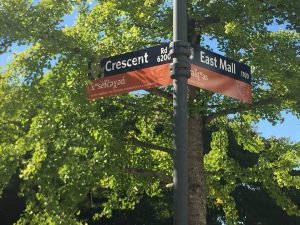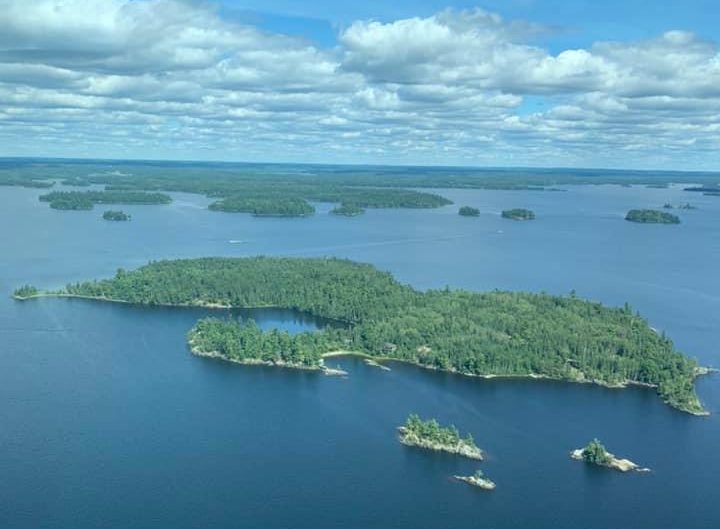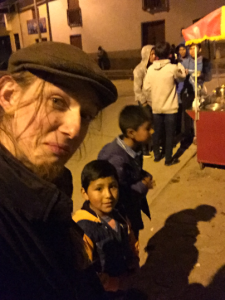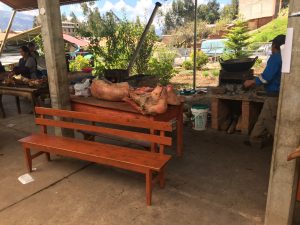
I am following Jay T. Johnson’s call to develop a critical consciousness by engaging with placed-based pedagogies grounded in indiginiety. This essay focuses on his secondary conception for ‘place’: “the embodied location of the everyday struggle for meaning” (Johnson 830). The place I am concerned with is the street corner of cəl̕qʷas (facing inland) and xʷsel̕c̓əχən̓ (going around the outside perimeter of a building). These hən̓q̓əmin̓əm̓ signs on campus were added a few years ago, in order to represent and preserve the linguistic heritage of this unceded territory. These hən̓q̓əmin̓əm̓ names show a connection between language and land: wherein locating a place is done relative to natural geography, rather than with cardinal directions (e.g. “facing inland” contesting “east”, etc). The fact that several other hən̓q̓əmin̓əm̓ street names are approximate translations of the pre-established english street names is a tangential line of inquiry. This essay will analyze the design of the aforementioned street sign, present my interpretive metaphor of it, and illustrate the beginnings of a storied geography.
Beginning my analysis, note that the sign is bisected with the names established by UBC ‘placed’ above the hən̓q̓əmin̓əm̓ names. This positioning is the foundation of my metaphor, and it is firstly significant because in english writing convention, a title below another title is identified as the “subtitle”: a secondary option if the primary title does not suffice. English orthography appears as a subtitle to hən̓q̓əmin̓əm̓ only after hən̓q̓əmin̓əm̓ orthography appears as a subtitle to english.
The UBC crest sits in the top left, opposite the Musqueam crest in the bottom right. The fact that the UBC and Musqueam crests are placed in geometric opposition suggests there are other ways in which they may be in opposition, such as in the conventional coat-of-arms that perpetuates colonial symbolism, which UBC adheres to and Musqueam contests: the letters “UBC” are printed above the setting sun and western ocean waves characterized in the flag of British Columbia, all contained within a typical coat-of-arms style shield; by contrast, the Musqueam crest has no letter symbols: a Salish salmon is above the pattern of a fishing net, all contained within the same approximate teardrop shape, but distinctly a downturned arrowhead.
Here I present my interpretive metaphor: taking notice of the colours, above a dark blue and below an earthy orange-brown hue, imagine a cross section of concrete with clay below it. The blue is taken to symbolize the “concrete” structures of the place “UBC campus”, and the brown underneath it symbolizes the “clay” as the place of the unceded territory that has been metaphorically, linguistically, and geographically paved over. The geography of the UBC campus, its concrete buildings, places, and names, are all constructed above unceded territory; the former effectively invisibilizes the later, and only by passing through the concrete does the clay become represented. Since concrete is expensive to pour, whereas clay could presumably be dug up almost anywhere, capitalism makes it a priority to preserve the concrete before considering what underlies it. Thus, the clay can either break through, contesting the concrete, as was done outside of Brock Hall in 1947, or it can cooperate with the concrete in finding a place where clay could be ‘dug up’ and displayed without damaging the concrete, as with the hən̓q̓əmin̓əm̓ signs.
Therefore, the hən̓q̓əmin̓əm̓ place names are presented as a subtitle to the (un)questionable names established by UBC. The english/hən̓q̓əmin̓əm̓ sign at xʷsel̕c̓əχən̓ and cəl̕qʷas embodies a storied geography of contestations mediated through cooperation: here UBC campus is located as a colonial/english place, on top of a Musqueam/hən̓q̓əmin̓əm̓-speaking place.
What about the “first” tree replanted outside Geog building?
What do the graduation trees represent?
Works Cited
Johnson, Jay T. “Place-Based Learning and Knowing: Critical Pedagogies Grounded
in Indigeneity.” GeoJournal, vol. 77, no. 6, 2012, pp. 829–836.
www.jstor.org/stable/23325391.









 a friendly reminder that forest fragmentation is easy to visualize, and that this is one place we can begin in a Descartes meditations tabula rasa moment as a starting place for our interpretation of FOOD CHAIN and FOOD PATHWAYS. Forget everything you know about food chains and food pathways, and relearn these keywords from a perspective besides an academic one. What can a food chain even be, when the pollinators food supply (wild flowers in the forest) is nearly eradicated? Can our food pathway to salmon exist while a anthropocentric food chains run roughshod over herring roe and ocean waters?
a friendly reminder that forest fragmentation is easy to visualize, and that this is one place we can begin in a Descartes meditations tabula rasa moment as a starting place for our interpretation of FOOD CHAIN and FOOD PATHWAYS. Forget everything you know about food chains and food pathways, and relearn these keywords from a perspective besides an academic one. What can a food chain even be, when the pollinators food supply (wild flowers in the forest) is nearly eradicated? Can our food pathway to salmon exist while a anthropocentric food chains run roughshod over herring roe and ocean waters?
